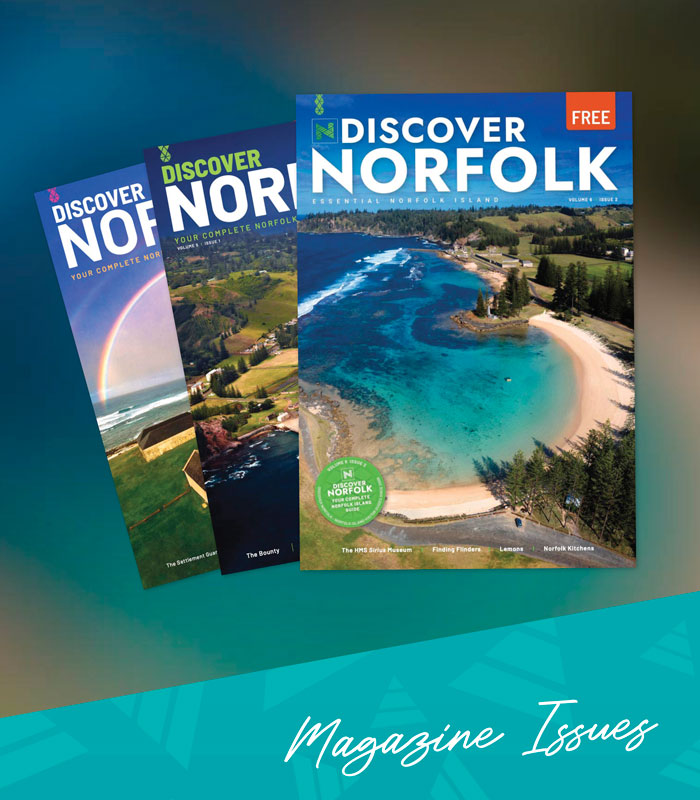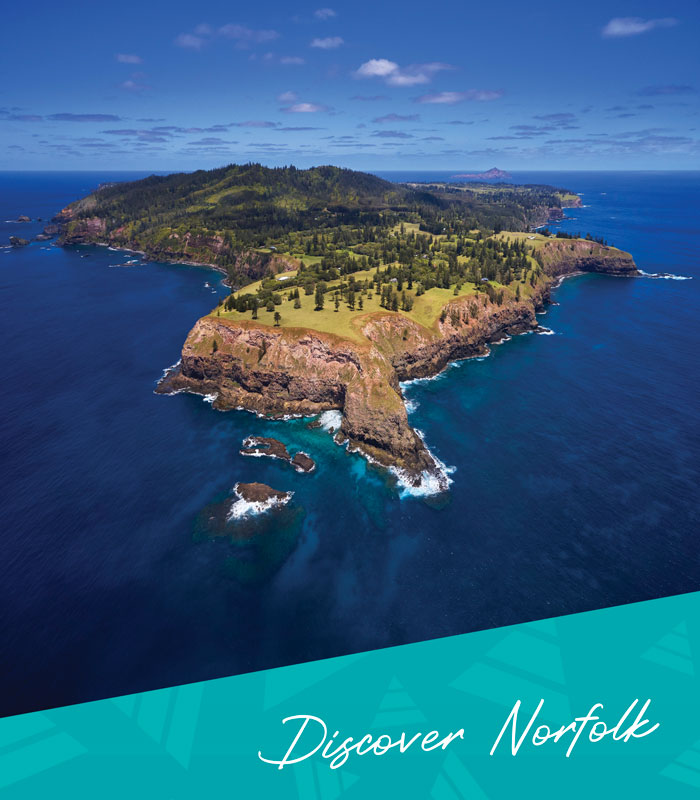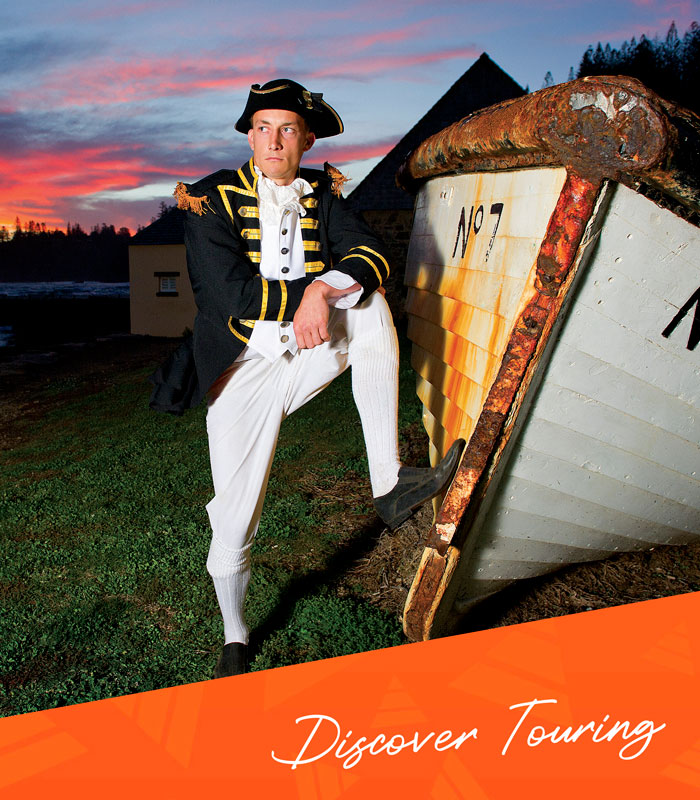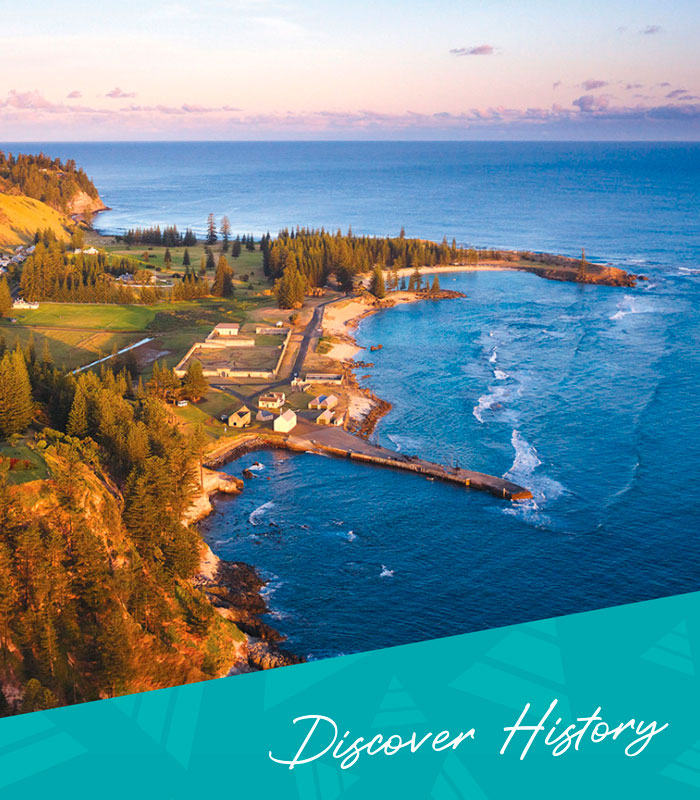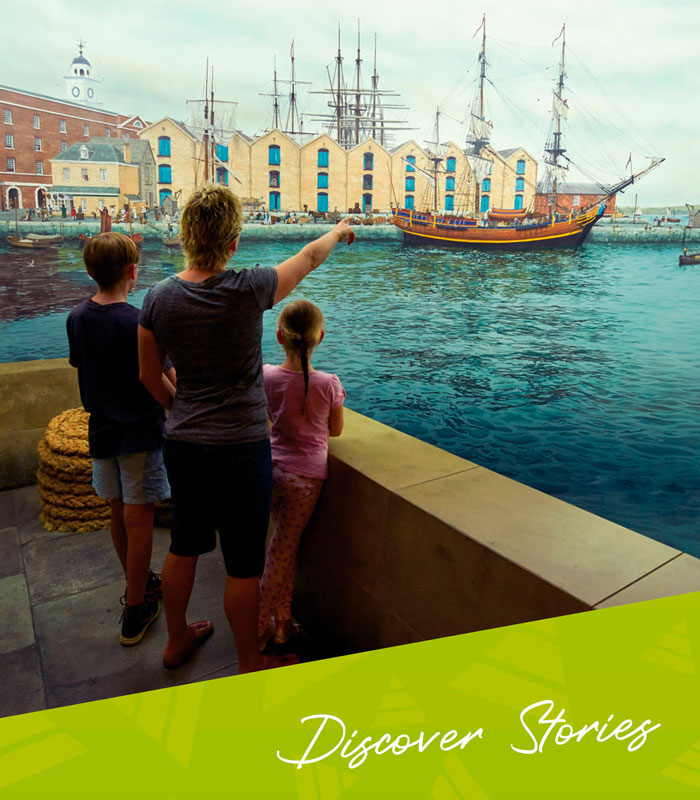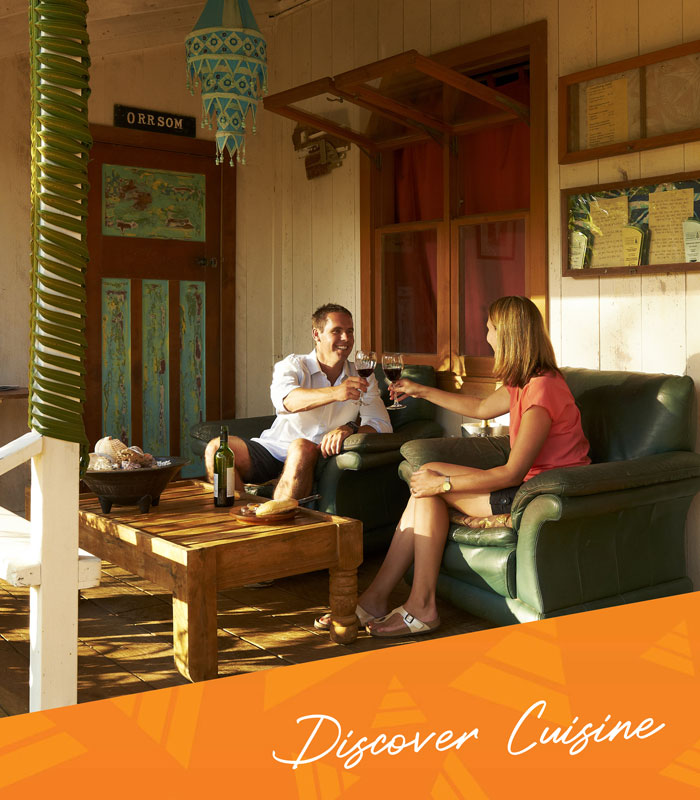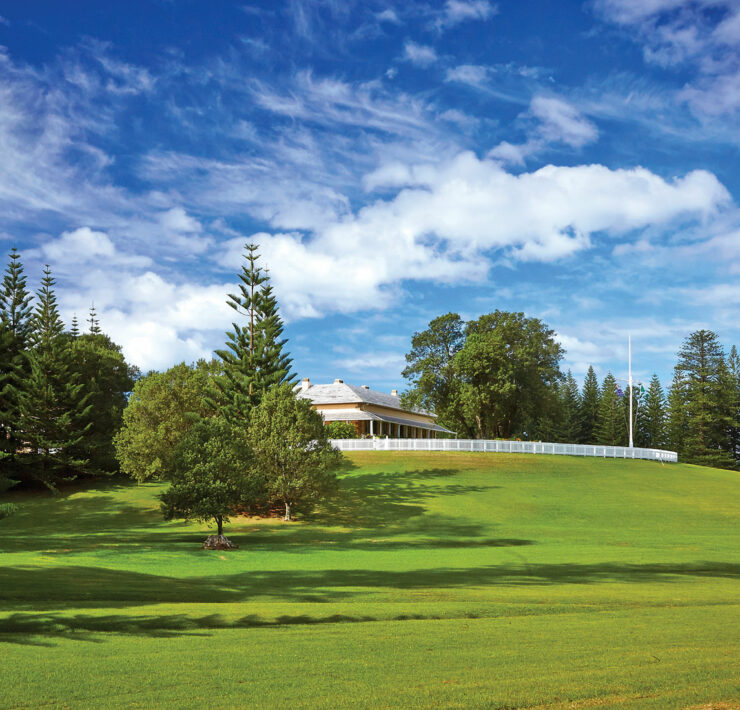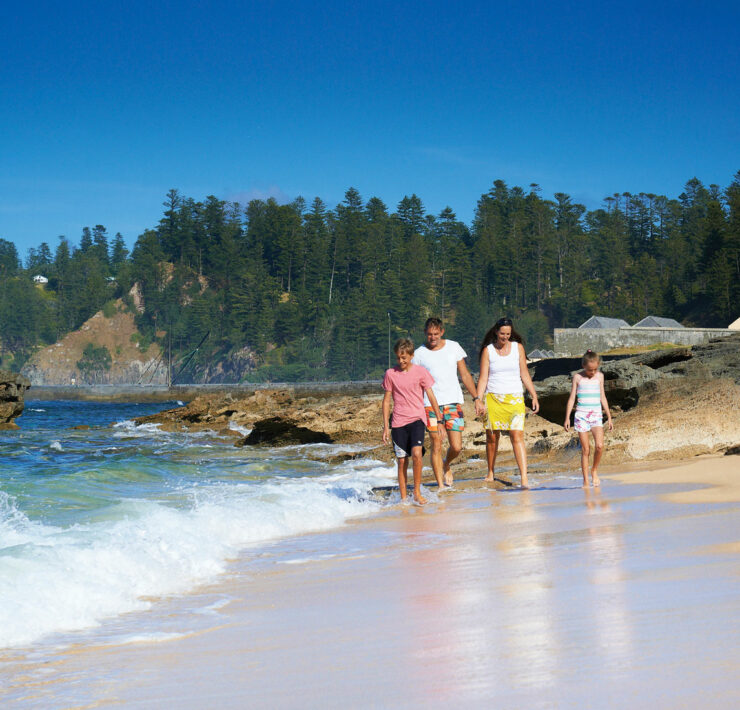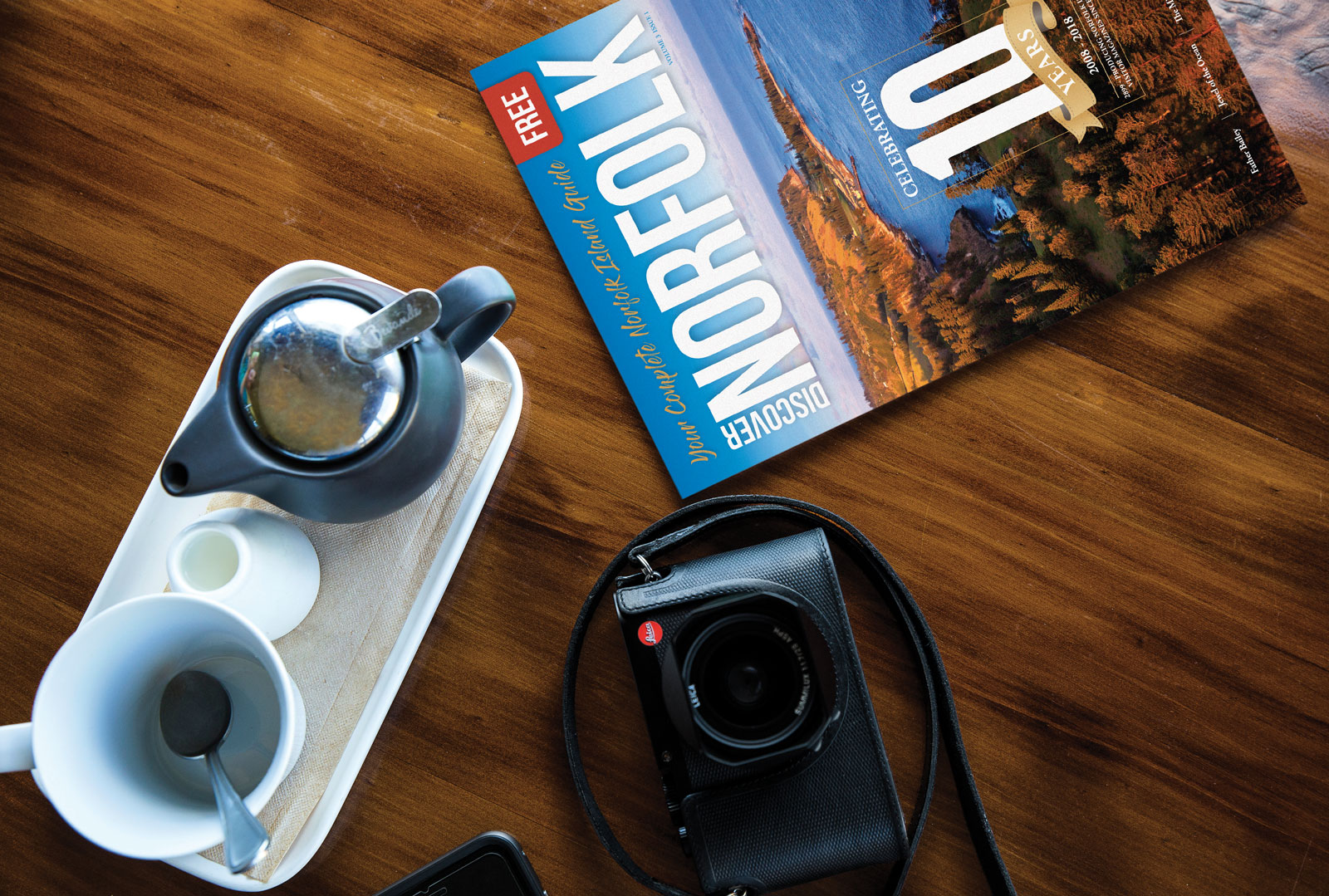
Near the Kingston Pier is a small, single-room building set at a different angle to its neighbours. This building – the Settlement Guardhouse – was built around 1798 to front a road that no longer existed when the other structures were erected. Today, it offers some of the only testimony on how the original British settlement in Kingston was laid out. The building, which has been used for many purposes over its lifetime, was recently reopened to the public as a new visitor information centre for Kingston.
Colonial Beginnings
It is thought this building was constructed about 10 years after the establishment of the first British Settlement on Norfolk Island. That settlement was originally called Sydney, and is now known as either Kingston or Daun’taun.
There’s little documentation of the building’s use during the earliest era. In the 20th century, the Guardhouse was thought to be a bakehouse, due to the size of the chimney, though later archaeological investigations showed this wasn’t the case.
Although the township of Sydney grew rapidly, authorities deemed it too expensive and remote to maintain – particularly given the failure of industries to thrive (such as mast-making or flax production). Once the decision to close the first British Settlement was made, the island’s settlers were removed to Van Diemen’s Land, despite their petitions to remain. In 1814, the island’s first British Settlement ended. To dissuade the French and Spanish from gaining an easy foothold in the absence of a British population, the buildings were set on fire and destroyed.
Rebuilding
Although the building was burnt in 1814, enough of it remained that in 1825, when the British returned to start the infamous Penal Settlement, the Guardhouse was rebuilt. It seems that destruction of the settlement’s buildings in 1814 was far from complete, as a number of other buildings are known to incorporate the walls and foundations of earlier buildings, such as the Civil Hospital, Surgeon’s Kitchen and Government House.
Construction began on the present form of the Settlement Guardhouse in about 1826. It was described in 1829 as being a stone-shingled building with:
2 doors, 2 apartments, 1 floor, 3 window shutters…
1 guard bed, 1 arm rack, 1 form, 1 sentry box
By 1839, it had been modified to have a door in the south-west wall, flanked by two windows, and a verandah covering the entrance.
Although it is a small building, it has been put to a large number of uses.
It didn’t function well as a guardhouse because it lacked visibility of the Pier and other buildings. As a result, in the 1840s a small porch was built on the 1st floor of the Pier Store, from which guards could better observe the pier area.
“It is at a distance from the spot immediately in charge of the Guard, with a large old house, formerly the Commissariat Store (Beach Store) in front of it, and it is not even in sight of the most important objects to be guarded”
Following the conversion of the Pier Store, the Settlement Guardhouse was converted into an engineers’ store. A door was opened in the south-east wall, and the door in the south-west wall was converted into a window.
In the 1850s, the building then became a reading room and library, as well as the office of the penal scrivener, whose job was to read and write letters for illiterate convicts.
The British Penal Settlement was closed for a number of reasons. By mid-1855, the penal functions had been almost entirely transferred to Tasmania, though a small group of convicts and staff were left as caretakers to prepare the island for the arrival of new residents from Pitcairn Island. The descendants of the Bounty mutineers and their Polynesian partners came ashore on 8 June 1856, a day celebrated locally as ‘Bounty Day’.
Holiday home, boat shed and liquor store
The building was used for storage until the early 1900s when it fell into gradual decay. For decades it stood empty as a roofless shell, used occasionally for shelter from the wind by workers, or as an ad hoc picnic spot by locals and tourists.
Ike Christian took up a lease on the building around 1937, contingent on his reroofing and securing of the structure. The roof was reconstructed and shingled, and a new door, windows shutters and second-hand fire box oven were installed. For a time it was intended the building might also function as a boatshed, and the door in the south-east wall was widened considerably. Sand was used as flooring during Ike Christian’s time, which coincidentally continued an earlier practice: during the British Penal Settlement, sand was often dumped in the under-floor area of buildings to reduce dampness.
Like many of the Kingston buildings, it was used as a holiday home from time to time, and Ike and his wife could be found selling lemon syrup drinks during the holidays for a sixpence apiece.
After World War II, the structure was hired by Jack Anderson and others for use as a boatshed. It was re-roofed in corrugated sheets, the windows were blocked and a set of double doors were installed in the south-east wall.
In about 1978, it was needed for a truly worthy cause: beer storage (though not without some minor renovations first). Later, in the 1980s it was used to store plasterboard and timber for restoration work around Kingston.
Archaeological Excavation
The Settlement Guardhouse was restored in the 1980s, but prior to its restoration, archaeological excavations were undertaken. The excavations confirmed that the building originally dated from the Colonial Settlement period (1788-1814). Included in the finds were a porcelain button, smoking pipe stem, livestock and fish bones, hihi (periwinkle) shells – and even a fragment of human skull from the socket region! Unfortunately, dating the finds proved unreliable due to disturbances from rodent burrows.
Restoration
To bring the roof of the Guardhouse back to a more original form, the structure was reroofed in the 1980s with hand-split Norfolk Pine shingles.
At the same time, the walls were re-rendered with cement and acrylic paint – which was then thought to be the best way of preserving the buildings in Kingston, but which is ironically now known to be quite harmful to them, instead.
In the 1990s, it became a library and resource room for the Norfolk Island Museum. The dampness of the building proved to be a major detriment to the collections stored there, however, and several years ago the materials were moved to No. 9 Quality Row. These materials today comprise part of the museum’s extensive research centre.
Following the removal of the museum collections, the building was closed to the public in preparation for repairs and maintenance. This time the work was focused primarily on the walls of the structure, and in particular removing the concrete render and acrylic paint.
Members of the Kingston Works team travelled to Tasmania for traditional skills training – in particular, lime rendering. Upon their return to Kingston, they began producing lime locally and used the Settlement Guardhouse to refine their skills.
The older cement render was carefully removed on both the inside and outside of the building and the building was then coated in lime render. After being put on, the render was tinted with a diluted lime wash.
New windows and a new floor were constructed by local tradespeople and installed. The flooring and the furniture inside the building have been made from Norfolk Pine. Recognising that its use now is for modern purposes, the ceiling was painted black to focus the attention of visitors away from the ceiling and toward the informational panels hanging on the wall.
Today you are welcome to visit this amazing little building near Kingston Pier, where you’ll find information about the history, heritage and culture of the site, as well as information about what to see and do to make the most of your visit. It’s a great starting point for exploring the World Heritage Site, and with more than 40 standing buildings here there is a lot to see and experience – so webaut yu gwen (where are you going)?
____
The Settlement Guardhouse is open 7 days a week, free entry. Kingston and Arthur’s Vale Historic Area (KAVHA) is one of the 11 World Heritage Listed Australian Convict Sites.
____
Image Credit: Norfolk Island Museums – reproduced with permission
____
Article content disclaimer: Article first published in Discover Norfolk, Volume 06 Issue 01, 2023. Please note that details of specific travel, accommodation and touring options may be outdated. References to people, places and businesses, including operating days and times may be have changed. References to Government structure and Government businesses/entities may no longer be applicable. Please check directly with businesses and/or Government websites directly rather than relying on any information contained in this article before you make travel arrangements.



